Warren Christopher, 1925-2011, and Danny Stiles, 1923-2011
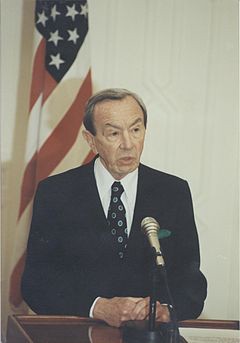
Warren Christopher and Danny Stiles were both men that either you’ve never heard of or you’ve forgotten about. Christopher was a public servant, and Stiles was a disk jockey, both for a long time. There was nothing to connect them in the course of their long, rich lives but for the coincidence of their passing — Christopher died last Friday; Stiles, a week ago — and the fact that they were both the last of their breeds.
Christopher left the bigger footprint. Bill Clinton’s first Secretary of State, Christopher bounced between law practice and public service. He was the head of what came to be known as the Christopher Commission, which suggested reforms to the LAPD following the Rodney King incident and everything that followed that, and, as SecState he was instrumental in both the Oslo Accords and the Dayton Agreement, the latter of which worked out pretty well. The consummate appointee, he was well-known for his equanimity — regarded “as every husband’s ideal for a wife’s divorce lawyer.”
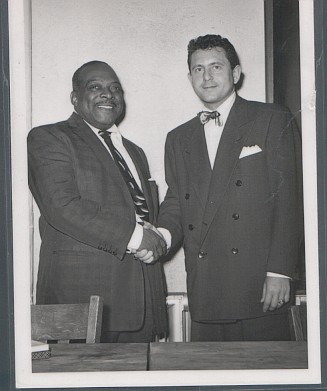
Stiles, the Vicar of Vintage, Danny Stiles on Your Dials, playing some of the greatest music of the Twentieth Century! He was a DJ, and an itinerant one at that, as the Oldies radio format slowly evaporated. He, and his 78s and 45s, specialized in the music of a long time ago, the big bands and the crooners, pre-1950. In the NYC area, he was a fixture on the radio for over forty years, on whichever station would have him. He bounced from station to station, sometimes buying his own airtime, ultimately becoming the last to offer what was once considered the “Oldies” (a format which now encompasses Interpol and Jimmy Eat World). He evinced the broadcasting skills of a time when radio was king: poetry punctuating the who/what/when/where of cuts that hadn’t been played in decades, signing in and out with alliterative gorgeousness that was nearly as good as the forgotten platters he spun.
This is not to say that there will never be another gentleman diplomat, or another fierce torchbearer for a slowly receding genre of music, but the fact that the Platonic ideal of each passed within a week of each other marries them, briefly. They each speak, implicitly and expressly, of some of the finer qualities that we will grow nostalgic for.
Brent Cox is all over the Internet.
Christopher photo via Wikimedia Commons; photo of Stiles with Count Basie courtesy of his website.
On To the Sweet 16!
On To the Sweet 16!
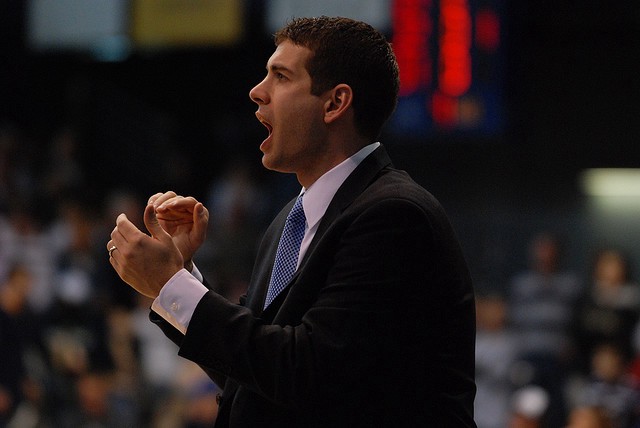
After four bustling days of NCAA tournament action, a few truths have become clear: the Big East Conference was every bit as overrated as it looked before the tournament began; the era wherein referees’ decisions were considered sacrosanct is over; and Virginia is for basketball lovers.
Of the preposterous ten Big East teams that we were told deserved at large bids to the tournament (University of Connecticut earned the automatic bid), only one remains in the field. And the two Big East teams left, UCONN and Marquette, each played and defeated Big East teams in the Round of 32, meaning that, in theory, had they faced non-conference foes instead, we could well have been rid of the entire lot of them. Instead, we’ll have to wait until Friday.
But the Big East’s failures are as much a symptom of the hype machine we’ve created as anything else. There are more teams in that conference, which means more televised games; and all are in or near or involved in competitions centered around New York City, the largest media market in the country. The sheer volume of coverage alone can make it seem like the Big East is the most important — and ergo the best — conference in America. This is completely by design. Why else would anyone want to have an 18-team conference? It’s unwieldy and it damages the teams at the bottom of the conference, keeping them forever striving for a turnaround season that would enable them to finish … 14th? It might also be notable that the two teams remaining both finished 9–9 in that mega-conference, good enough for 9th (UCONN) and 11th (Marquette) in the league.
Meanwhile, five schools from outside the so-called power conferences reached the second week of the event: BYU and San Diego State from the Mountain West; Butler from the Horizon; Richmond from the Atlantic-10; and Virginia Commonwealth from the Colonial Athletic. That those last two teams hail from the same city, and one far off the traditional basketball power grid, is remarkable unless, by chance, you’ve had the opportunity to see them play, as I have, living in nearby Washington, D.C. In all, five teams from Virginia made the field and three of them won at least a game. Only the state of Indiana also had three winners, but two of those fell in their next game, each to lower seeded teams. In fact, what makes the Commonwealth’s feat doubly impressive is that none of the state’s three teams that won on Thursday and Friday was favored to win. In fact, one of them, VCU, had to win a play-in game in the new “First Four” round to even reach the round of 64.
By the way, both of Virginia’s Sweet 16 teams came out of the same Southwest bracket. And in that region, being favored to win proved poisonous this year. Three double-digit seeds reached the Sweet 16 round in San Antonio, a first for a single region. Richmond and VCU were joined by grind-it-out Florida State, who pushed, shoved and irritated a much more skilled but less physical Notre Dame to oust the Big East’s highest remaining seed.
So what does all this mean? I guess that sort of depends on your basketball worldview.
For those of us who view the NCAA tournament as more than just the culmination of another college season, as something more akin to a snapshot of where the game is and where it’s going, the results indicate a tectonic shift away from a centralized base of influence toward a more multi-polar basketball order. The reasons for this shift are less than dramatic, however. An overall thinning of the talent pool of experienced elite players at the upper end of the college basketball spectrum means that schools like Butler, VCU, Richmond, San Diego State and BYU can all compete on the level of Big East or Big 10 programs, which might enjoy large exposure but where the actual margin of error is shrinking rapidly. Put more simply, the talent gap has closed considerably in recent years.
Not that anyone should read too many tea leaves based on a single weekend of tournament play. Every year has its upsets, of course, and several of the non-power teams still alive this season are actually top seeds while two of the lowest seeds remaining are from the Big East and ACC. But, overall, the emergence of a new non-elite class in college basketball indicates a larger swing away from the notion that talent accumulates mainly at a few traditional powerhouses.
The exceptions here are mostly found in the East region, where all four of the schools remaining come from power conferences. Marquette — the lowest seed left in that part of the bracket — may be the 11th seed in the region, but the team still hails from the Big East. Kentucky, North Carolina and top overall seed Ohio State are all tradition-rich programs featuring multiple high school All-Americans. Duke and Kansas are still in the bracket, too, so admittedly it’s a bit premature to anoint a New World Order in college hoops. But there’s no denying that increased parity among the haves and have-lesses makes for a better opening to the tournament: closer finishes, increased drama, surprises abounding — and more Gus Johnson yelling.
Ohio State emerged from the first weekend clearly the class of the field. Their reward is a better-than-seeded Kentucky. North Carolina has yet to appear as dominant as its roster of blue chip recruits would suggest; however, the Tar Heels did manage to make it to Newark. Meanwhile, the All Americans that landed at UNC’s ACC rival Duke must be thanking the stars that there weren’t two more minutes left on the clock after squeaking by Michigan. I question whether Duke’s decision to play super frosh Kyrie Irving after he missed two months was the best thing for him or the team’s chemistry, but time will tell. Kansas had little trouble with its first two opponents and now moves on to face a region full of Cinderellas.
This was the first year I’ve ever gotten to see NCAA games in person. I went to the games held at the Verizon Center in D.C. and, thanks to the Butler Bulldogs, got to witness the best buzzer beater and arguably the biggest upset of the tournament so far.
Butler’s insane win over Big East regular season winner and No. 1 seed Pittsburgh in Saturday’s Second Round was a prime example of how tough it is to referee a big game — as well as the tough climate in which college basketball officials now operate. I can’t remember a time when calls were being questioned with such vehemence. Coaches, players and a highly motivated basketball media appear intent on bringing to college basketball the second-guessing and replay rules that football and baseball have already adopted. But I’ve long been a staunch opponent of bringing too much technology into the game. The refs are humans, and humans make mistakes. I’ve always considered the refs as, essentially, the frame in which the game operates — the less I see of them, the better. But there were multiple instances this weekend when crucial refereeing decisions late in the game either affected an outcome or opened the door to the idea that they had. But in no case I saw was a referee’s decision solely to blame for a team losing. For example, when the Pitt player committed that late foul on a rebound, there was no reason the player should even have been in that position, so blaming the ref for calling that foul is silly. Ditto for the other calls that got so much chatter. Sure, it’s natural to give the refs a quizzical look in these situations — but the truth is that, usually, it was a player or a coach (or both) who made the true boneheaded decision.
But it was a great first weekend, wasn’t it? Especially the opening Thursday. There were brilliant individual performances by BYU’s Jimmer Fredette and UCONN’s Kemba Walker, impressive team performances from Ohio State and VCU in particular, and a better-than-usual array of unforgettable finishes, including Morehead State’s shocker over Louisville.
But a special award for unforgettable finishes goes to Tennessee and coach Bruce Pearl. Pearl’s situation with the NCAA has been well documented, and his athletic director’s untidy remarks only two days before the team played Michigan on Friday cast doubt as to whether Pearl would be coaching his final moments for the Vols. Usually when teams go through tumult like this, they’ll rally behind the coach and over-perform. But, as has been the case for the Vols all season long, things didn’t happen as expected. The Tennessee players absolutely quit on Pearl in a humiliating 30-point loss to the Wolverines. The destruction was so thorough that Michigan became the first team in the history of the tournament to win despite not making a single free throw. Yes, Tennessee lost by 30 to a team that didn’t make a free throw. Ouch.
Hard to cry much for Pearl, though. He made his mistakes and now he’s paying for them, perhaps with his job. And who knows, maybe we’ll be watching the next Tennessee coach when Shaka Smart and his Rams from Virginia Commonwealth take the court in San Antonio next Friday.
Originally from Kentucky, JL Weill now writes from Washington, DC. His take on politics, culture and sports can be found at The New Deterrence and on Twitter.
Photo by bradjward.
Wolf Gang, Wolf Gang: SxSW as Spring Break
by Joshua Heller
On Thursday, I set out without a goal. I blindly looked for friends or live music. I roamed on into the night without any success. The next day I made a schedule that I actually adhered to. The younger version of myself is going to kick me for saying this, but “organization is the key to success.”
I attended the Scottish showcase at the British Music Embassy. They served fajitas and taco salad. The showcase was sponsored by governmental agencies and local chambers of commerce. The British government, you see, puts money into the arts to develop the culture and business of the region. Also free food is a good strategy to ingratiate people to a band.
Later, the line at the Fader Fort was already very long. Behind me, girls in day-glo spandex were making fun of girls in striped dresses and sunglasses. The neon girls said: “That’s what people who used to be into American Apparel are wearing now.”
Odd Future came on the stage chanting “Wolf Gang, Wolf Gang.” Someone said that it sounded remarkably similar to “Wu Tang, Wu Tang.” The teenagers from Los Angeles have the same business model as the Staten Island superstars: Release albums under a common moniker, then drop solo projects independently.
Odd Future pretended to hate their audience. This resonated with the crowd. Tyler the Creator flipped everyone off, then said “I love you guys, this is funny.”
After saying “swag” a bunch of times, the crowd became decidedly eager to “Kill People, Burn Shit, Fuck School.”
I asked a girl for a piece of her cotton candy. She declined.
* * *
At the hotel a group of teenagers asked me if I hated high school as much as they did. I said I didn’t remember. They were in “like a prog-rock slash straight-forward rock” band from Laredo. They’d performed two showcases at all-ages coffee shops. They said they were bored with school and wanted to pursue music full-time. I told them that was a great idea.
At the Lustre Pearl a couple in their forties took photographs of the knots in trees to send pictures of fake labias and assholes to their friends. I had hope for my future adulthood.
I entered the mosh pit during a Black Lips song. Someone helped me up, then handed me his business card.
SXSW, on one hand, is about the rekindling of youthful exuberance, while at the same time being very conscious that you have another life back home. You can get wild, but SxSW is spring break for people who are actually eager to return to their regular lives.
* * *
Matt and Kim played the break from The Shadows’ “Apache.” Then Erykah Badu played tambourine on stage. They performed a song whose music video showed them running around New York naked, which Badu herself appropriated. There’s an erosion of musical genres and artists creating music from the histories of hip hop, punk rock, electro and everything in between.
Kim asked the crowd if they had sex at SXSW. She pointed to Matt and said, “We did, this morning.” Matt and Kim are a good model for love. They work together to create something they are equally passionate about. Their shared love resonates with the crowd.
“I know it’s sappy, but this is the real world,” Matt said.
Joshua Heller has retreated to the rural countryside.
How You Can Make The Most Delicious Sandwich In New York City

Would you like to learn how to make the most delicious sandwich available to eat in New York City? It’s easy and not very expensive.
First, go to one of the noodle shops called Xi’an Famous Foods. This is a chain that started in Flushing Queens (locations at 41–28 Main Street and 133–31 39th Avenue), but now has two outposts in Manhattan: one in Chinatown, just north of East Broadway, on the outside of the East side of the base of the Manhattan Bridge — this is the one I usually go to. And one in the East Village, at 81 St. Mark’s Place. When you’re there, order the spicy cumin lamb burger (“B2” on the menu, $3.00), which is not really a “burger,” but more just chunks of lamb dredged in cumin and cooked with onion and garlic. Also order the tiger vegetables salad (“L1,” $4.50), which is not made with any actual tiger products (thank God, as tigers are extremely endangered!) but is rather cilantro, celery, scallions and chili peppers in sesame oil and vinegar and (I think?) a citrus juice. (Lime?)
When they give you your food, open up the sandwich, which is made with a pita-like bread (the proprietors of Xi’an Famous Foods hail from The Xinjiang Uighur Autonomous Region in Western China, a predominantly Muslim area than borders Pakistan and Afghanistan), and put some of the tiger salad on top of the lamb, then close the sandwich. Voila! You have made yourself the most delicious sandwich in all of New York, if not the entire world. You are an excellent chef.
Knut the Polar Bear, 2006-2011
I am too broken up to have anything significant to say about this, so I’ll let our friends from Next Media Animation give you all the details on the tragic passing of this famous bear. Farewell, Knut. You were truly too beautiful for this world.
Photos and Video from Election Day in Cairo
by Christian Vachon

Over the weekend, beneath the hot sun, a bit more than 18 million Egyptians — 41% of eligible voters — waited in same-sex lines to vote in a constitutional referendum that will shape the country’s transition from military rule.
The last time there was an election in Egypt was during the parliamentary contests of November 2010. Only 6 million bothered to cast votes; the rest of the country, disillusioned by the flagrant fouls of the Democratic National Party, stayed home. According to Human Rights Watch, in the days before that election, “Egyptian security forces had arrested 1206 Muslim Brotherhood members, including five candidates, and brought 702 of this group before prosecutors while releasing the rest.”
Conscious of the culture of suspicion surrounding anything political in Egypt, the interim government took steps to help bolster an appearance of legitimacy. Voting has been placed under the jurisdiction of the legislature, a branch trusted by the public. In addition, all military and police officers have been banned from casting votes.
Still, on the poll lines, fear of foul play was rife. Throughout the day voters re-tweeted the numbers of hotlines to report voter fraud. In Heliopolis, voters brought boxes of pens from home. They passed them out to others in line to guard against the possibility that pens provided by the government might use magic ink that could disappear from the ballot card hours after it is submitted.
One woman at a polling station in Boulak said that in her home district of Shubra there were reports that men were offering citizens packages of food in exchange for voting YES in favor of the new constitution.
On Sunday rumors buzzed through Cairo that the referendum had passed with 65% of the vote. In the end, it passed with 77%.
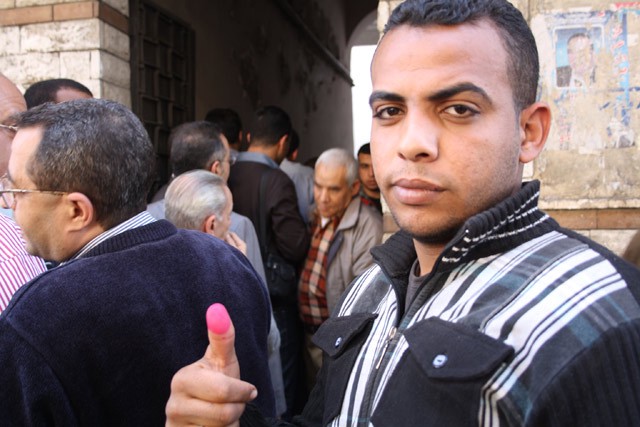
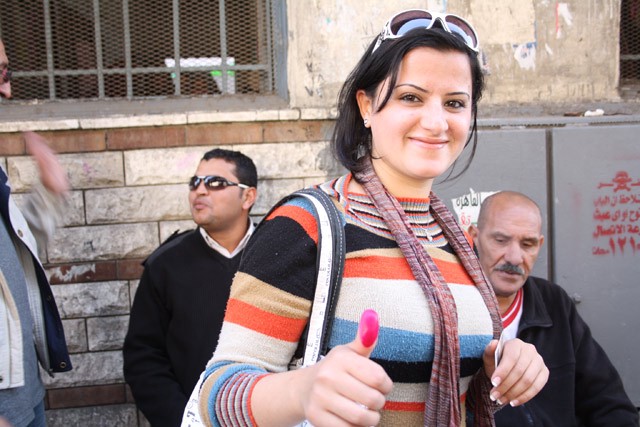
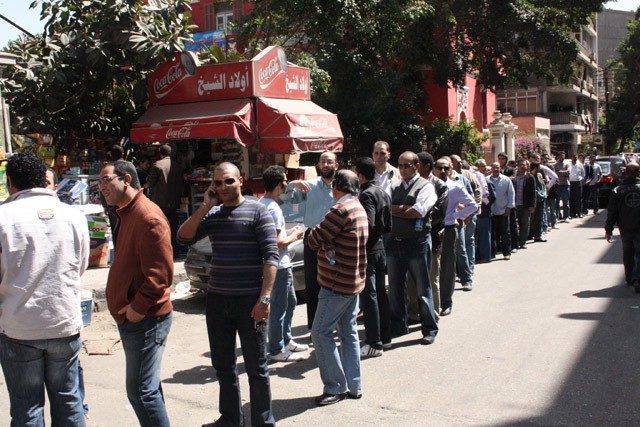

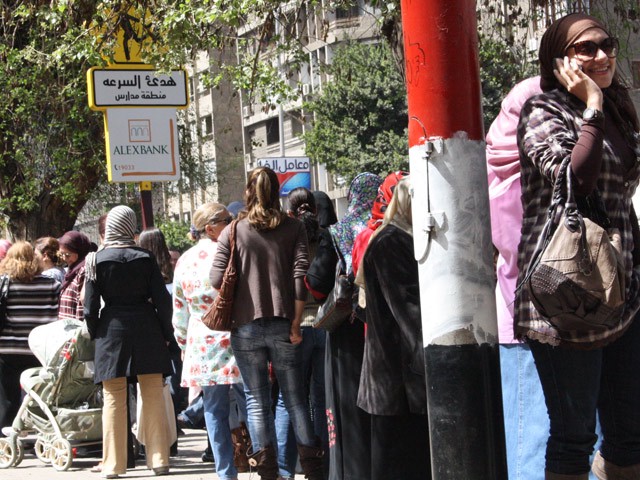
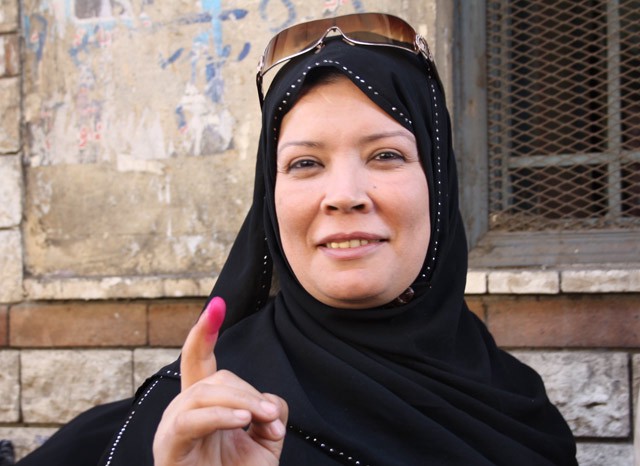
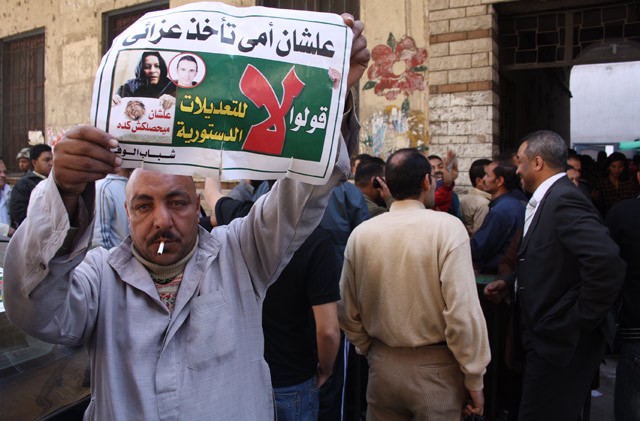
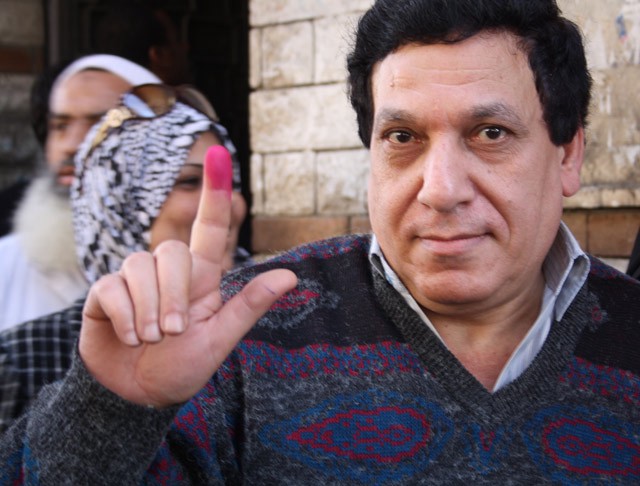
Gordon Reynolds is the pseudonym of a teacher in Cairo. He also posts regularly to Twitter, if you follow him there.
Politician Sorry About Calling Voters "Donkey-Botherers"
Not being up to speed with the proclivities of the people of Blackpool, England, I cannot say if the allegation is true, but it seems to be a fairly universal rule of politics that, if you’re holding any kind of elected position, you probably don’t want to suggest that your constituents screw donkeys. It’s just common sense.
Japan Nuclear Crisis: The Experts Weigh In
Japan Nuclear Crisis: The Experts Weigh In
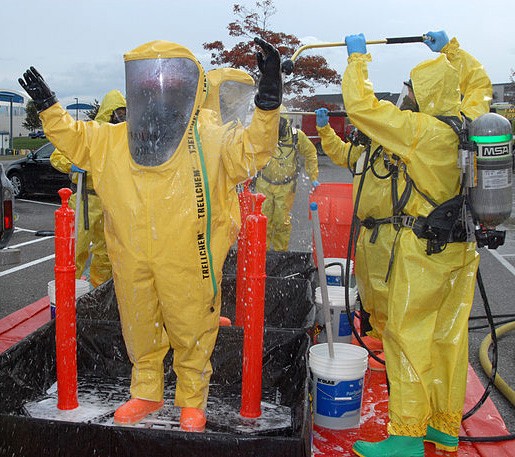
Reassuring news from Japan! Our panel of experts has assured us that the current levels of radiation are not a huge threat to those outside a 50k radius of the Fukushima Daiichi Nuclear Power Station, at least not right at this moment based on the admittedly limited information we’re being given, and based on the assumption that no further radioactive material will be released into the atmosphere — which is, in fact, happening at this very minute.
Fortunately, most of our experts agree that a full meltdown of the nuclear fuel at any of the reactors is “wildly unlikely” — although they’re not sure what can be done, if anything, to prevent the aforementioned wildly unlikely full meltdown.
Update, 9:30 A.M. EDT: After listening to the latest statements by Japanese officials, some of our experts are changing their assessments of the potential of a full meltdown from “wildly unlikely” to “pretty unlikely” or “sort of unlikely,” while others are now using terms like “somewhat likely” and “kind of likely, actually” and “awfully bloody likely.”
In the case of a full meltdown, some experts say that it would be “rather improbable” for molten fuel to burn through the walls of the reactor vessel, which are made of thick, thick steel. Others say the steel “really isn’t that thick at all” and that burning through the walls seemed “entirely possible” if not “quite probable.” (At Three Mile Island, in 1979, molten fuel made its way through some of the thick steel, but not all of it, but experts point out that this Japanese crisis is “nothing whatsoever” like Three Mile Island, one characterizing it as “way, way worse than that, in every dimension.”)
Update, 10:30 A.M. EDT: After a new wave of dire news from Japan, many of our experts have begun to pace and cough nervously, and some are volubly mulling various worst-case scenarios. Many of these experts tell us that the molten fuel will now “most definitely” burn through the steel, and fall to the floor of the containment structure. But these experts feel “pretty certain” that the fuel will not progress “all that far” before it starts to cool. Others predict, however, that it will “almost certainly” reach the walls of the containment structure, which are made of thick concrete, and will “absolutely” damage it, perhaps through cracking or crumbling. Some are growing concerned that steam explosions will totally annihilate the containment structure, allowing uncontrolled release of radioactivity. Others are starting to characterize themselves not as “concerned” but “extremely worried” and “deathly afraid” of this possibility, while still others have requested a nice, cool glass of water and a place to sit down for a minute before offering any further opinions.
Update, 10:49 A.M. EDT: Upon hearing that a new plume of radioactive material is heading out over the Pacific, one expert covered his ears and said, “Nah nah nah nah nah, I can’t hear you!” But many of our experts said that this should be no cause for concern to residents of the West Coast of the United States as the traces of radiation from the plume would be “miniscule.” But then other experts interrupted these experts, and said that the radiation would not be “miniscule,” but would “hopefully not be significant” or anyway, would at least only be “pretty likely” to cause major, life-threatening health problems in the populace.
When asked about the size of the radiation cloud that could, theoretically, drift across the Pacific and elsewhere if, hypothetically, one or more of the Fukushima reactors encountered a full core meltdown, four of our experts took deep, cleansing breaths, then reassured us that even with such a cloud, residents of the West Coast could simply “stay inside” and “take lots of showers.” Two experts stepped outside for a quick cigarette, then returned and told us that under such conditions, residents could just “remain indoors for a few months” and “refrain from drinking any milk for the next decade or so.” And one expert developed a rapid pulse and shallow breathing and had to be wheeled out of our conference room by EMS personnel.
Upon inquiring about a core meltdown of Reactor 3, which uses uranium and plutonium and therefore produces more toxic radioactivity, two of our five remaining experts asked if maybe they could leave and go to the bar down the block for an hour or two before resuming. One expert asked to be reminded exactly how much he would be compensated for his time, and another expert retreated to the corner of the room and began rocking back and forth, quietly mumbling, “It’s all over. We’re toast.”
The last remaining expert, though, assured us that everything would be absolutely fine, at least in the existentialist cycle-of-life sense, and that the Japanese government and the global community would do everything in their power to continue monitoring the situation — which, admittedly, equates more or less to standing by, helplessly wringing their hands — until either the situation resolves itself or several catastrophic meltdowns occur and a giant cloud of radiation descends on the earth, blocking out the sun and snuffing out life as we know it. A faint smile drifted onto our last remaining expert’s face as he described this, and that’s when we searched his briefcase and found a large quantity of potassium iodide, along with several grams of heroin and a few sterile syringes.
Heather Havrilesky is the author of Disaster Preparedness, a memoir published by Riverhead Books in January 2011. She was Salon.com’s TV critic for 7 years and cocreated Suck.com’s Filler before that. She has dispensed misguided advice at the rabbit blog since 2001.
U.S. Navy photo by Mass Communication Specialist 2nd Class Tucker M. Yates, via Wikimedia Commons.
"War is sport, sport is war"
“You can get a clue as to how we see war by how newspapers are selling themselves through their front pages. The news stands are covered with more explosions than human faces; the bombs are the story, and the message. One cloverleaf-shaped explosion in particular so beautifully conveys the story that it’s on five front pages today. The bombs are the stars.”
The Awl Bracket Contest Update: In Which Everyone Learns That TruTV Is Channel 779

Wow! Now I don’t want to speak for everyone here, but I think we can safely say that the first two rounds of this tournament (I’m ignoring the nonsensical practice of calling the play-in games the first round. Is anyone who’s not being paid by the NCAA actually calling it this?) have been pretty crazy! Equally exciting: the The Official 2011 Awl March Madness Bracket Tournament Challenge Sponsored By The Awl! Let’s go through some of the highlights.
The Big East? More Like The Not-So-Good-At-College-Basketball-East! If you weren’t following college basketball this year, there was a lot of talk about how the Big East conference was head and shoulders above everyone else. As it turns out, this is not really the case! Of the 11 Big East teams given bids to the tournament, only 2 remain. But, don’t fret: Those of you who picked the Big East to excel at the women’s tournament should know that the Big East is an incredible, undefeated, 9–0! Lol, jk. No one picked any teams for a women’s college basketball bracket, ever. How many women’s brackets do you think were filled out this year by not Barack Obama? Two? Three? Are these games even televised? Don’t worry, people who are saddened by your brackets being ruined by the Big East sucking in the tournament, let’s all share a big laugh at the expense of women’s sports!
Buzzer Beaters! There were a lot of them! How exciting!
Children Make Mistakes! If you didn’t catch the end of the Pittsburgh/Butler game, there was some controversy after a foul was called at the end of a tie game on a Pittsburgh player who was rebounding a missed free throw by his teammate. Now, if you aren’t familiar with how this works, it’s a pretty big mistake by the Pittsuburgh player to foul in that instance, although there’s an argument for the fact the officials could probably just let that call not happen as it’s the end of a tie game that would go to overtime and give both teams a chance to play an extra period of basketball in order to determine the winner. But back to Nasir Robinson, the Pittsburgh player who committed the foul: it’s insane to think that there is so much pressure put on this kid, because, despite the fact that he’s 6’5″/200+ pound huge basketball player, he’s still a junior in college who was born in 1989 (1989!!!). I’m probably being a little more sympathetic than I would otherwise be because of ESPN’s Fab Five documentary that showed Chris Webber’s mistake in his final college game, and obviously that was a much bigger mistake on a much bigger scale, but, still, seems crazy to think that these kids handle that sort of pressure. (1989!!!!!!)
Can That NAPA Auto Karaoke Guy Ever Work Again?! I mean, the commercial should be applauded for being so standout, but don’t you feel sort of bad for the guy in it because it seems like now that this is successful he’s locked in to being the NAPA Auto Karaoke Guy forever, not unlike the Verizon guy or Jared Fogle. (Probably worth mentioning that he’s also probably getting really rich off that commercial too, but still, FOREVER THAT GUY!)
The Awl Bracket Topped By “Bittersweet”! I would have more insights here, but everyone decided to come up with clever names for their brackets, instead of using their commenter names, making it mostly impossible for me to identify them and mock or laud them for being able to pick teams so well! To “Bittersweet”’s credit, although he/she/it claims to have picked “A completely random bracket” (the name of his/her/its bracket), it seems like there was at least a little know-how involved in his/her/its picking as he/she/it didn’t pick, like, Wofford to win it all. So, kudos to you thus far!
As far as Awl contributors, Abe Sauer looks to be closest to the top. I can tell it’s him because he thankfully made his bracket name the same as his commenter name. Tell me other people, was your bracket pun worth it? Was “Kenny Bracketface Edmonds” really that good of a joke that you couldn’t pass it up? Think long and hard “Vicky J”! Amongst Awl staffers, Edith and Adam are performing the best, but will probably be undermined by the fact that they stuck to their WASP-y Northeastern roots (they’re both from New England or some other really White people-y place) and both picked UConn to win it all, which, no matter how good Kemba is, isn’t happening.
(Also, If you’d like to associate your bracket with your commenter name, feel free to put your bracket name below in the comments. This is not meant to be as comment bait-y as it sounds. Honestly.)
